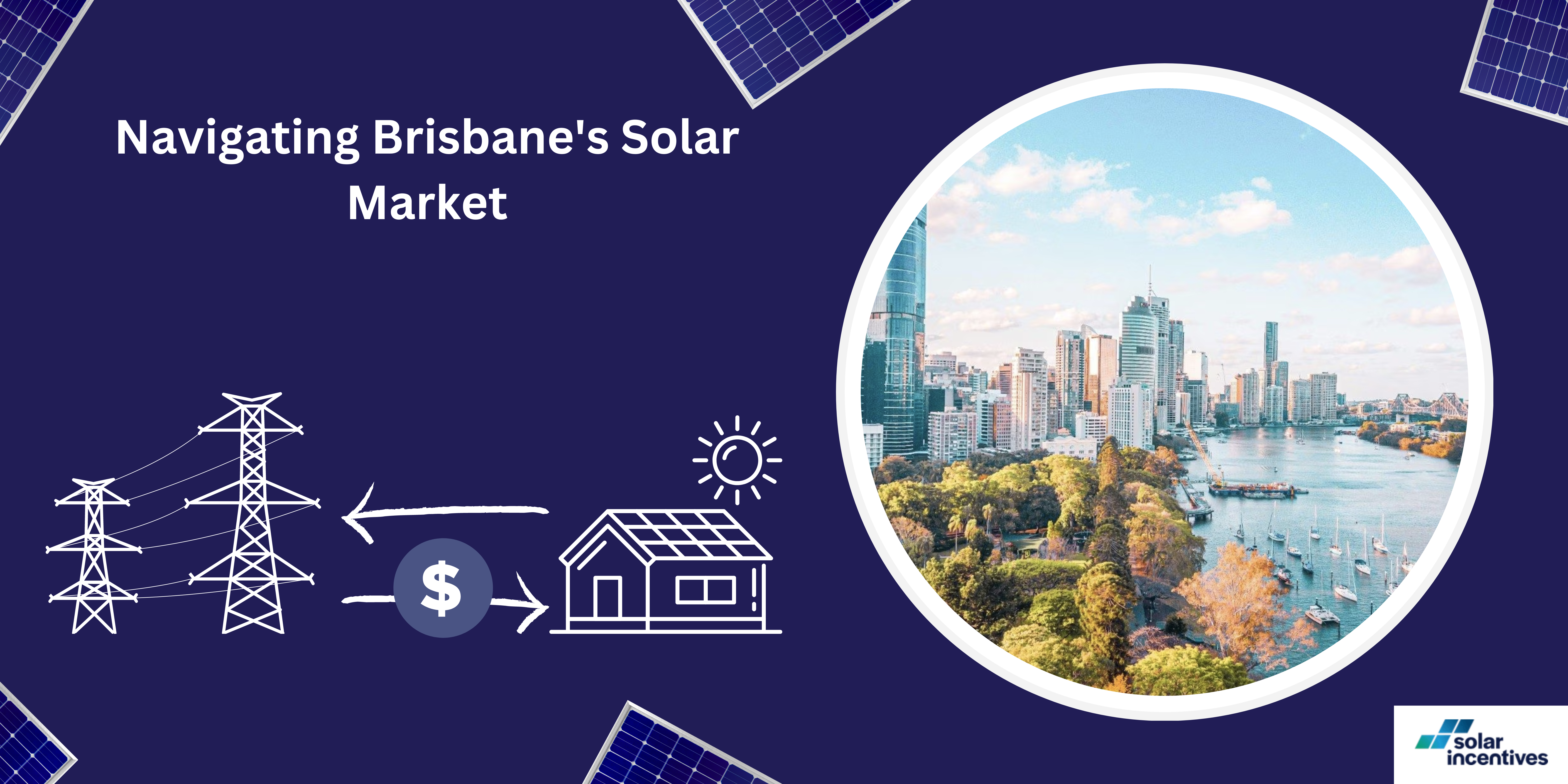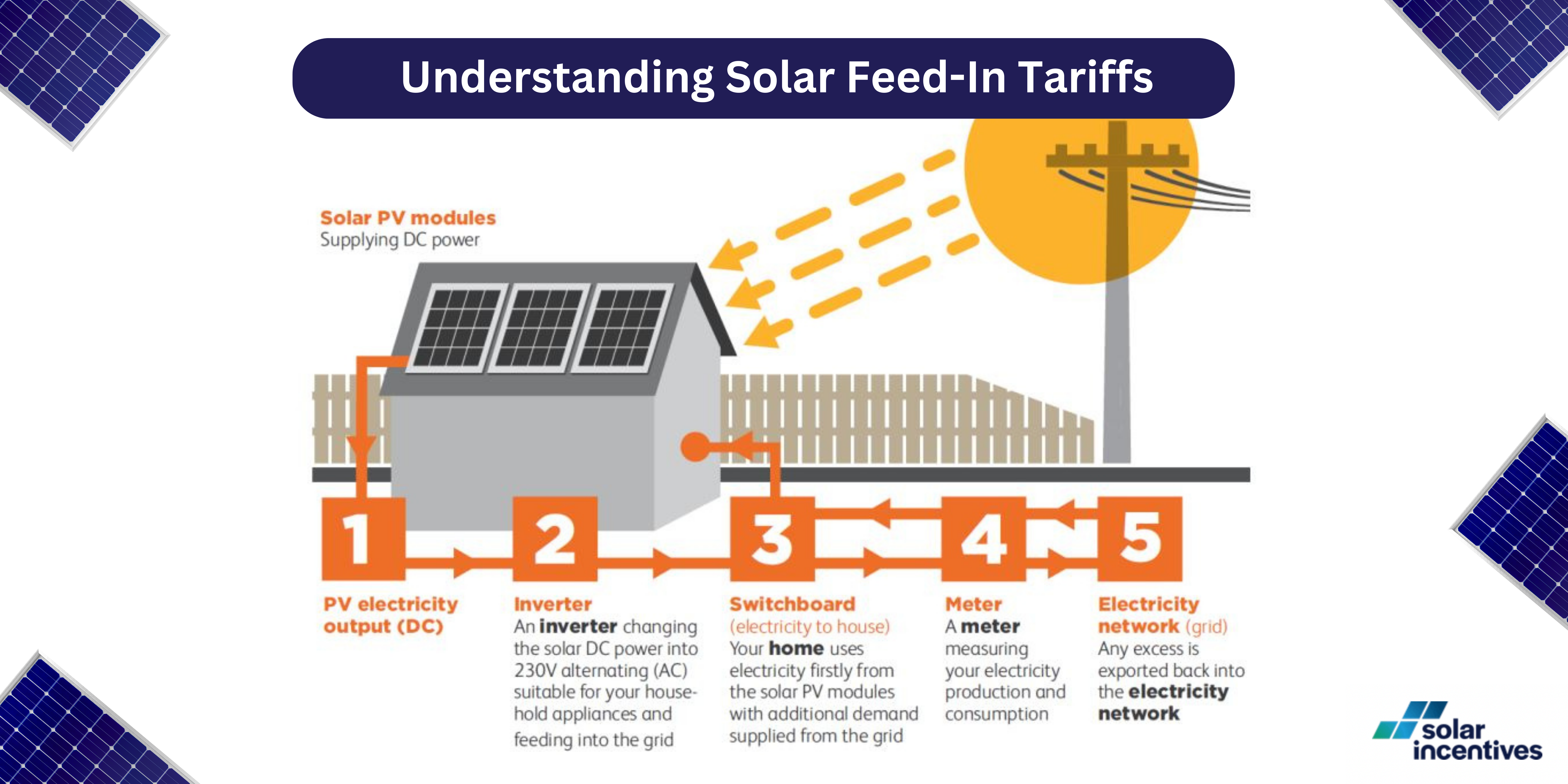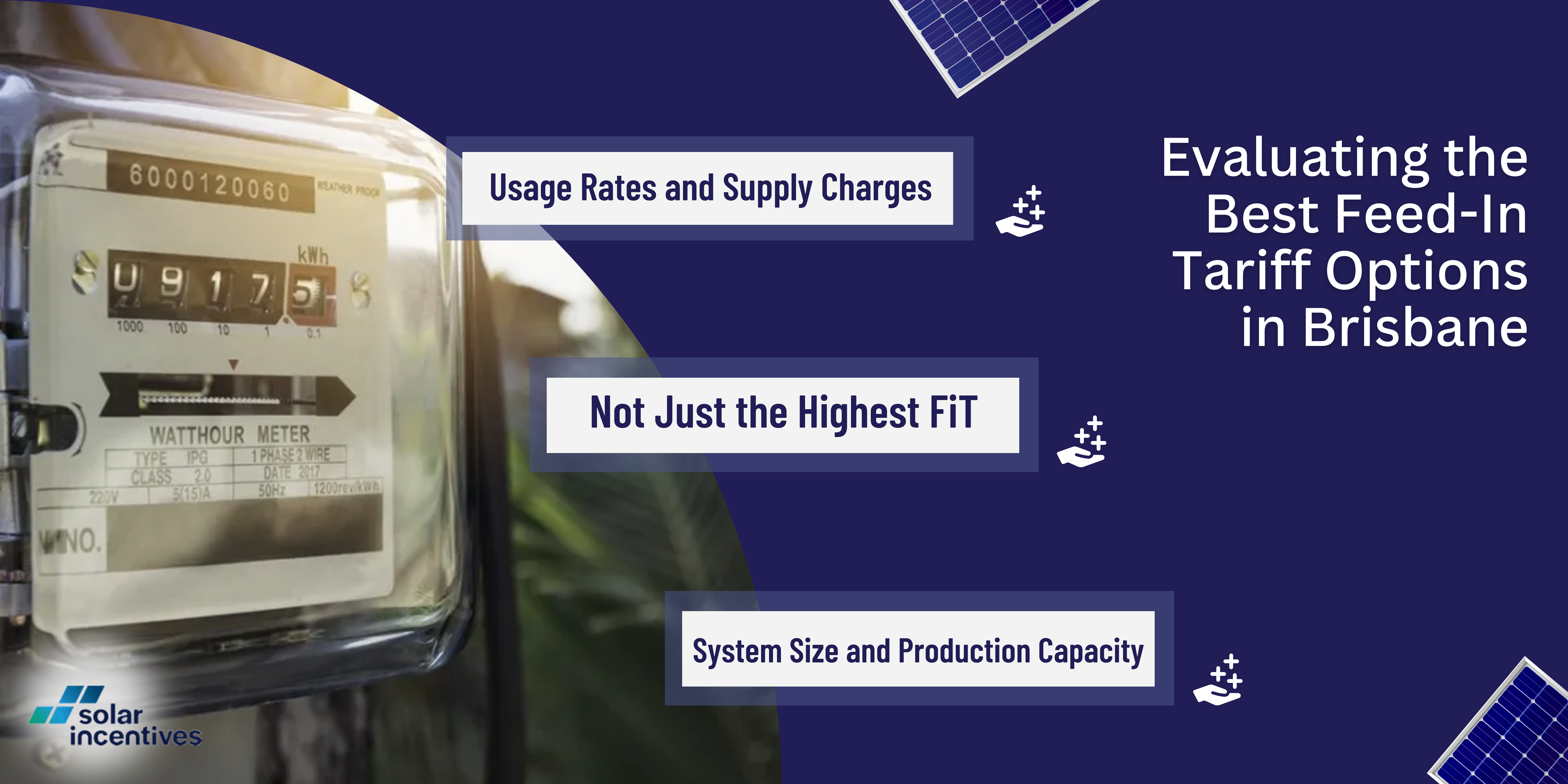Navigating Brisbane’s Solar Market

Steve Hill
Expert in Residential and Commercial Solar Solutions and Energy Efficiency
4 min read · 11th December 2023
In the solar market of Brisbane, understanding and choosing the right solar feed-in tariff (FiT) in 2023 is more crucial than ever.
Solar feed-in tariff is a credit you receive for the excess electricity your solar systems generate and supply back to the power grid.
It’s a pivotal element in solar energy economics, turning your rooftop solar panels into a source of income. A competitive FiT makes sure that the surplus energy doesn’t go to waste. But instead contributes to your energy savings and environmental goals.
Understanding Solar Feed-In Tariffs

Solar feed-in tariffs (FiTs) are an integral part of the solar power system landscape, but what exactly are they?
A solar FiT is a rate paid to solar system owners for the excess electricity their system generates and feeds back into the public electricity grid. This rate is typically a set amount per kilowatt-hour (kWh) of electricity exported.
The mechanics of it are straightforward. When your solar panels produce more electricity than your household consumes, the surplus energy is automatically fed into the grid.
In return for this contribution of green energy, your electricity provider compensates you with a FiT.
This arrangement not only supports the grid with renewable energy but also turns your solar installation into a potential source of income.

Now, let’s delve into the benefits of FiTs for solar system owners:
Financial Returns
One of the most immediate benefits of a FiT is the financial return on your solar investment.
Maximising Solar Usage
FiTs encourage homeowners to optimise their solar system’s efficiency. It motivates owners to invest in systems that can produce more than their immediate energy needs.
Support for Green Energy
FiTs play a crucial role in promoting renewable energy. By providing a financial incentive for solar power generation, they contribute to a larger environmental goal. It means reducing reliance on fossil fuels and lowering carbon emissions.
Energy Independence and Stability
Solar systems with FiTs contribute to energy independence by reducing reliance on the traditional power grid. This decentralised approach to energy generation also enhances grid stability.
Market Dynamics and Innovation
The FiT mechanism stimulates market growth and innovation in the renewable energy sector.
For Brisbane residents, understanding and leveraging these tariffs can lead to both personal and community-wide benefits.
Current State of Feed-In Tariffs in Brisbane
Changes and Trends in 2023
No Mandatory Minimum in South East Queensland
In 2023, South East Queensland, which includes Brisbane, continues to have no mandatory minimum feed-in tariff.
Retailers in this region set their own rates for the solar power they purchase from system owners.
Competitive Offers by Retailers
Retailers are offering competitive feed-in tariff (FiT) rates to attract customers.
Retailer FiT Ranges
The FiT rates offered by various retailers range significantly, with the minimum FiT rates as low as 0c/kWh to 5.0c/kWh and maximum rates reaching up to 16.0c/kWh for certain conditions such as system size or daily caps.
Regional Queensland Tariff
For regional Queensland, including areas outside Brisbane, the government has set a mandatory minimum FiT. In 2023, this rate is 9.300 cents per kilowatt-hour.
Comparison with Previous Years
Historical Generosity
The FiT in Queensland used to be much more generous, offering 44c/kWh over a decade ago.
However, a significant reduction to 8c/kWh was announced in 2012. This was a larger cut compared to other states like Victoria and South Australia.
Impact of Reduction
The reduction in FiT led to a range of reactions, including a rush of customers applying for solar systems before the cut-off date.
Shift in Focus
After the reduction, the focus for many homeowners shifted from exporting solar at a premium price to self-consuming the generated solar power.
Despite the FiT reduction, the economics of installing solar remained strong due to high retail electricity costs and reasonable payback periods.
FiT in 2022
In 2022, the FiT for regional Queensland was set at 9.300 cents per kilowatt hour, consistent with the previous year.
The current state of feed-in tariffs in Brisbane and the broader Queensland area reflects a market-driven approach in urban areas, with more regulated approaches in regional settings.
This dynamic has been shaped by historical policy changes and evolving market conditions.
Evaluating the Best Feed-In Tariff Options in Brisbane

Factors to Consider When Choosing a Tariff
Not Just the Highest FiT
While a high solar feed-in tariff (FiT) is appealing, it’s crucial not to overlook other important factors. A provider offering a high FiT might have higher usage rates or daily supply charges.
Usage Rates and Supply Charges
Assess usage rates, measured in cents per kilowatt-hour (c/kWh), and daily supply charges. Sometimes, a lower FiT might be more beneficial overall if accompanied by lower usage and supply rates.
System Size and Production Capacity
If your solar system is small and doesn’t generate much excess electricity, prioritise providers with lower usage and daily supply charges.
For larger systems capable of exporting significant excess electricity, a higher FiT might be more beneficial.
Government Policies and Incentives
Overview of Government Initiatives
Federal and State Rebates
Both federal and state governments in Australia offer rebates for rooftop solar and battery storage. These rebates can significantly reduce the cost of purchasing and installing a solar system.
Small-scale Renewable Energy Scheme (SRES)
This scheme provides financial incentives for the installation of small-scale renewable energy systems.
It operates through the issuance of small-scale technology certificates (STCs), with the subsidy amount varying based on factors like the system’s location and size.
Large-scale Renewable Energy Target (LRET)
Run by the Federal Government, the LRET focuses on generating large-scale renewable energy, mainly through power stations.
Let’s explore the impact of Policies on Feed-In Tariffs
Net Feed-in Tariffs
Most feed-in tariffs in Australia are now ‘net’ tariffs. This means that electricity produced by solar panels is used in the home first, and only excess electricity exported to the grid is paid for.
Variation by State and Retailer
Feed-in tariffs vary from state to state and between different electricity retailers. In some states, the government regulates a minimum rate. While in others, such as southeast Queensland, it’s up to consumers to negotiate with retailers.
No Regulated Minimum in Southeast Queensland
In regions like south east Queensland, there is no government-regulated minimum payment for feed-in tariffs.
This creates a market-driven environment. It’s where customers need to shop around to find the best rates offered by electricity retailers.
Conclusion
For those navigating Brisbane’s solar market to find the best FiTs, it’s crucial to consider the factors mentioned above.
Make the most of government rebates and incentives to offset installation costs. Remember, a well-maintained and efficiently used solar system can provide significant long-term benefits.
Visit Solar Incentives to explore the latest solar rebates. Take the quiz to find out if you’re eligible for a rebate.
Solar Incentives has 50 years of experience in the energy industry and knowledge of over 2000 national solar installers.
This can guide you in making informed decisions for your solar system needs. Achieve efficient, long-lasting solar energy solutions in Australia.
Article By
Steve Hill
Steve Hill has a rich background in the solar energy sector and is dedicated to empowering consumers with knowledge, particularly in residential and commercial solar solutions, solar batteries, and energy efficiency products.
Steve enjoys sharing his wealth of experience, offering practical advice, and learning about the latest trends and innovative solutions in the world of solar energy.

